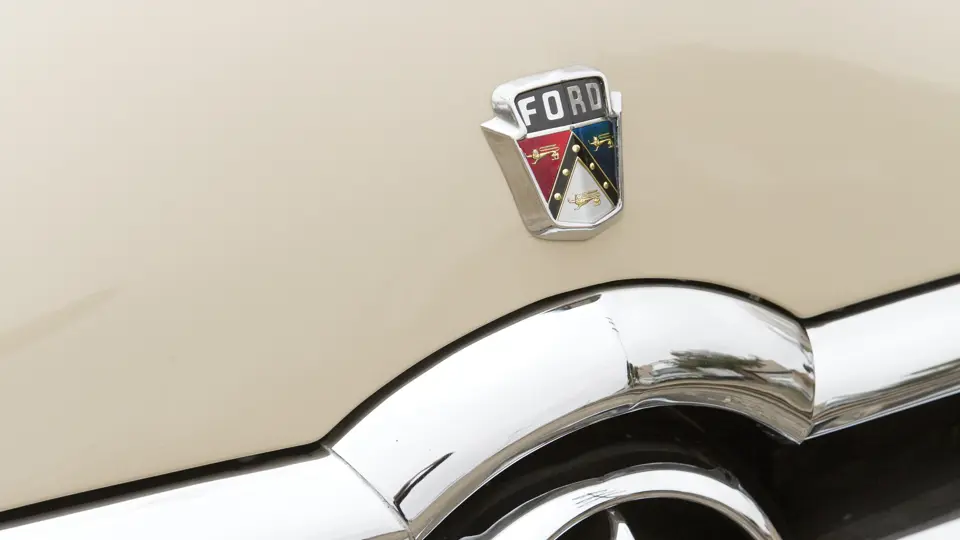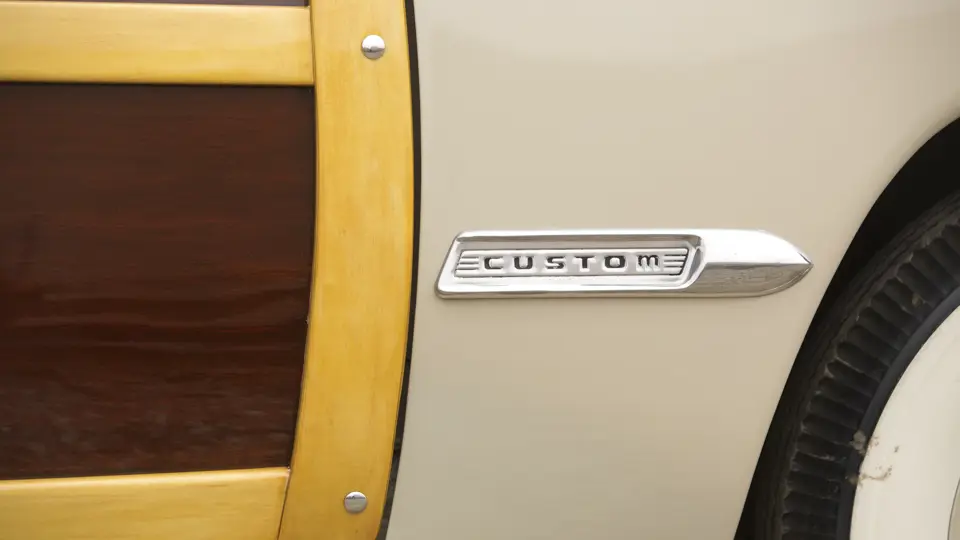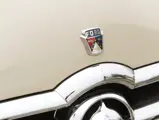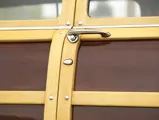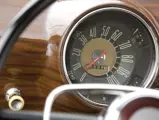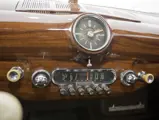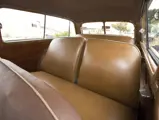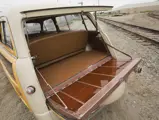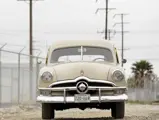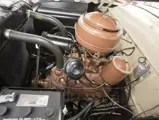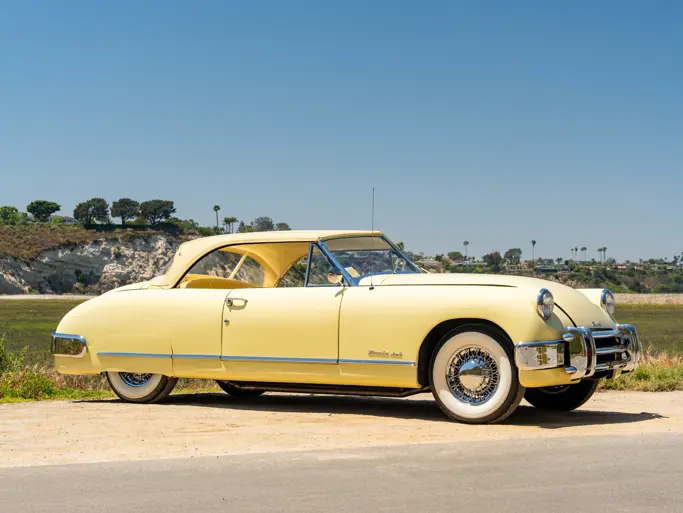Model 0BA. 100 bhp, 239.4 cu. in. L-head V-8 engine, three-speed manual transmission with overdrive, coil-spring independent front suspension, live rear axle with semi-elliptic leaf springs, and four-wheel hydraulic drum brakes. Wheelbase: 114 in.
Ford’s changes for 1950 were subtle: new pushbutton door handles that operated rotary latches, relocated parking lights, a modestly redesigned hood ornament, and a new medallion for the hood and trunk. The instrument panel received new knobs, and “non-sag” springs and foam cushions improved the seats.
The engine received a new camshaft, timing gear, and a three-blade fan, none of which measurably increased power. A torsional stabilizer was added to the front suspension, and improved steering linkage resulted in “finger-tip control,” although real power steering was still in the future. Station wagons now had real leather only on the driver’s seat (the second and third seats were in vinyl), and they received the automatic courtesy light that is now standard on Custom DeLuxe models.
There were two versions of the station wagon in 1950. The early model carried over the window design, seats, and wood tailgate of the 1949 Custom. In May 1950, to keep pace with competitors’ new developments, a revised model was introduced. The second seat could now be folded flat for load space, although the third seat still had to be removed. The side windows were changed so that only the forward pane slid open, and steel stamping replaced the wood tailgate. The side panels were also steel now, with Di-Noc imitation wood grain. Although the name did not appear on the cars, the new Ford wagons received the upmarket name “Country Squire.”
This early 1950 woodie was a one-family car before purchase by the current owner. Built at Ford’s Saint Paul, Minnesota, plant, it spent most of its life in Minneapolis, Minnesota. After the original owners died, the car was purchased by their daughter, who kept it in the San Francisco area for a number of years.
It has been repainted in Ford’s Sunland Beige. It presents well, but not of concours quality. The wood, largely original and some of which is Birdseye Maple, was removed, blocked, refinished, and reinstalled in the shops of woodie authority Nick Alexander. The dashboard was restored, and the car has the correct leather front seat and vinyl second and third seats. The odometer shows barely 66,000 miles, which are believed to be correct. Accessories include a Ford radio, a Magic Air fresh-air heater, a locking gas cap, and rare full wheel covers.
The engine compartment is tidy, and the engine itself is painted in correct gold with black ancillaries. There is some surface rust under the front fender wells, as well as on the grille and on some fasteners. While not a concours contender, the car presents well, and one can be proud to be seen in it. It’s perfect for any old car activity, or just taking the kids out for ice cream.
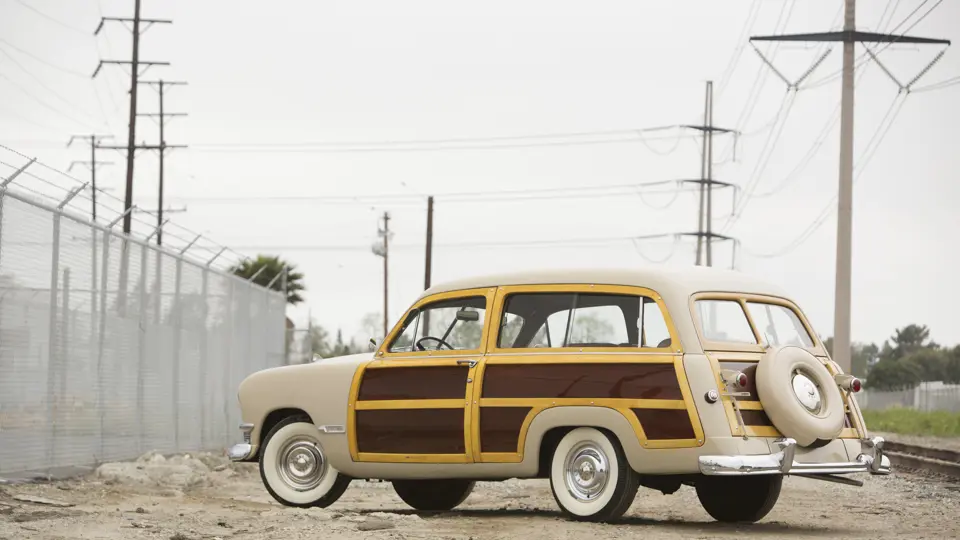



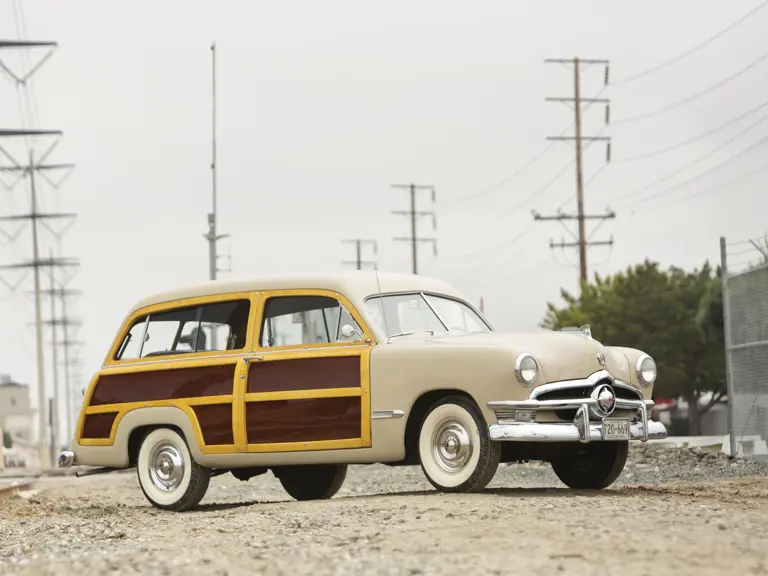


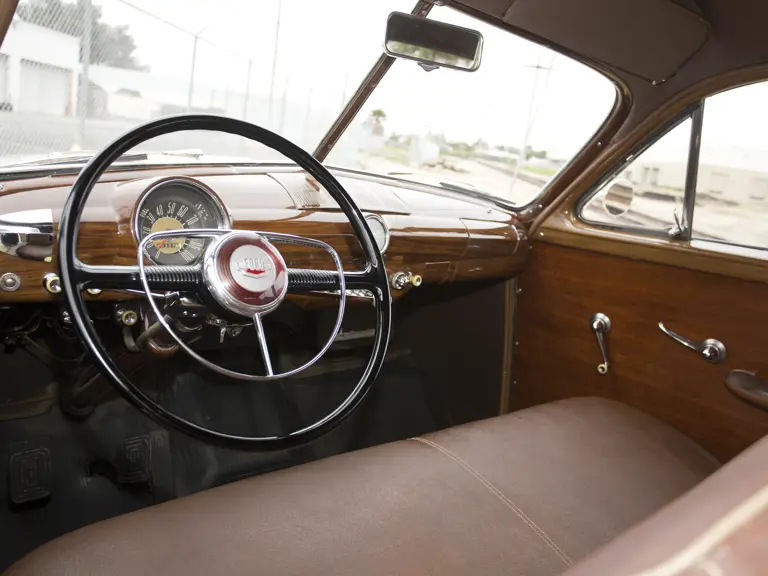


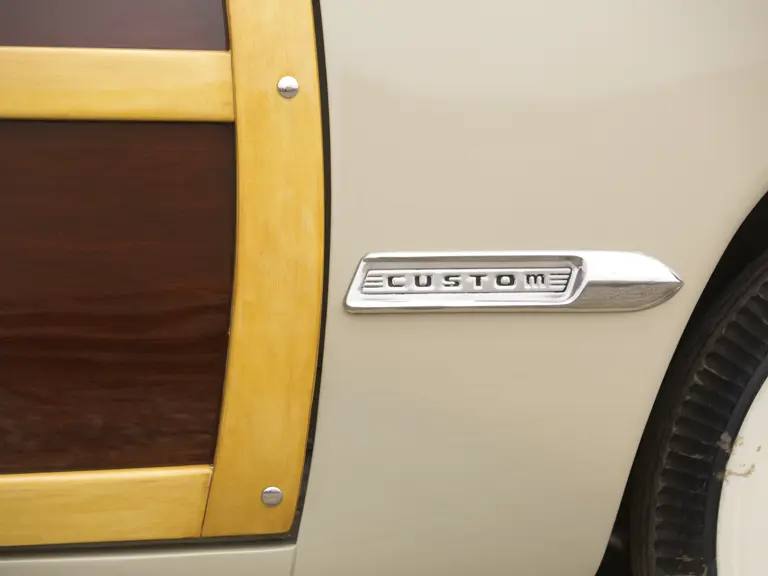
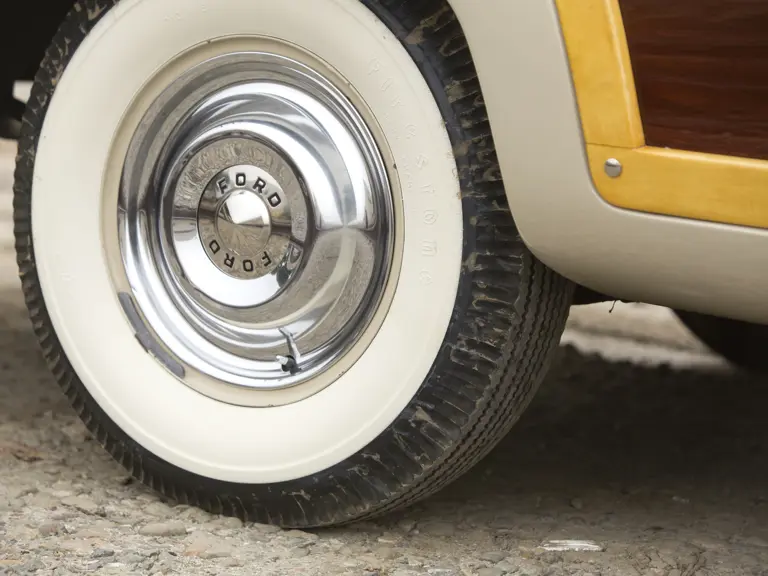
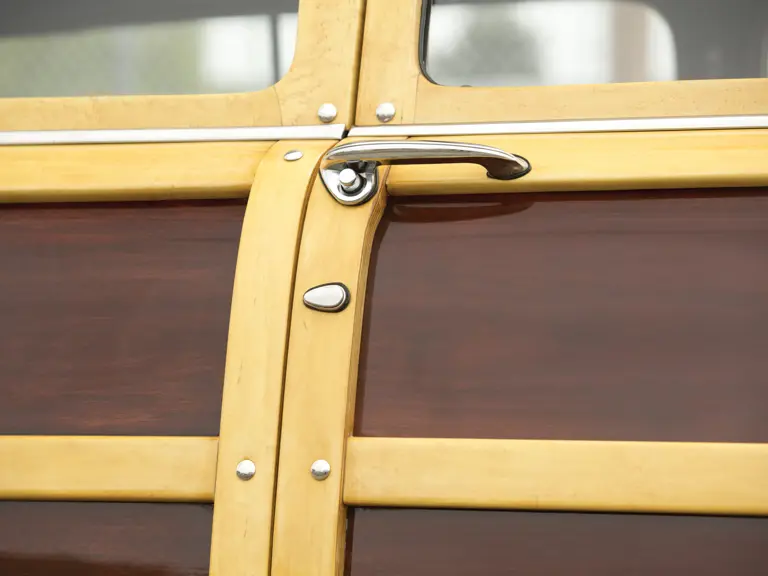
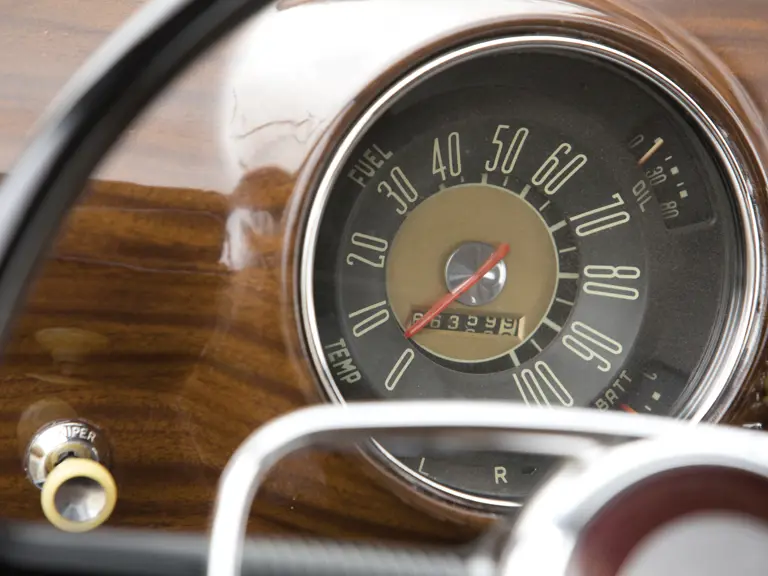



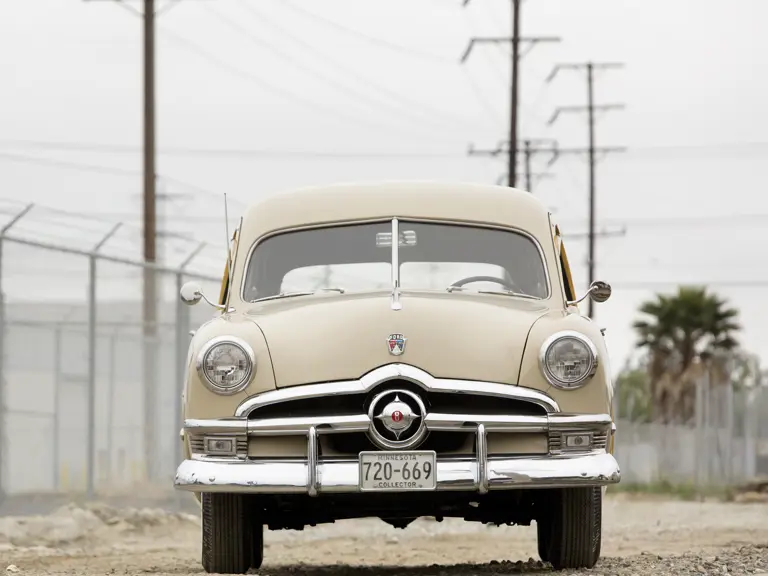
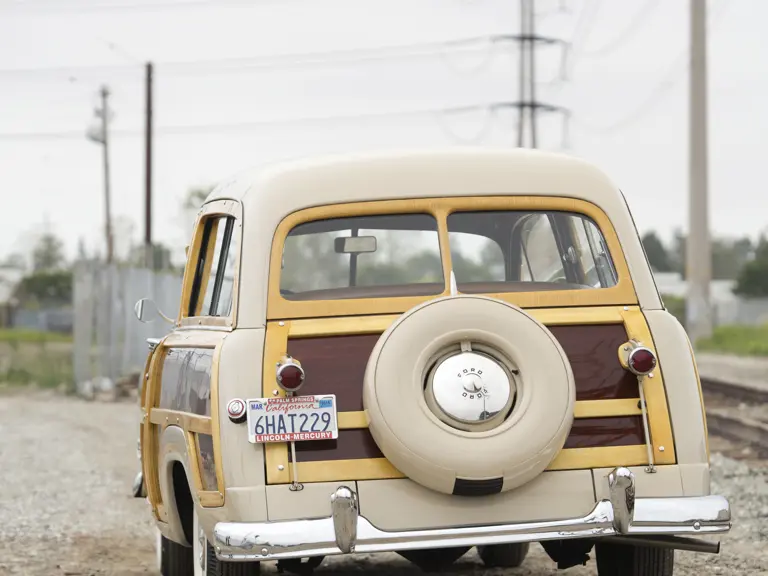

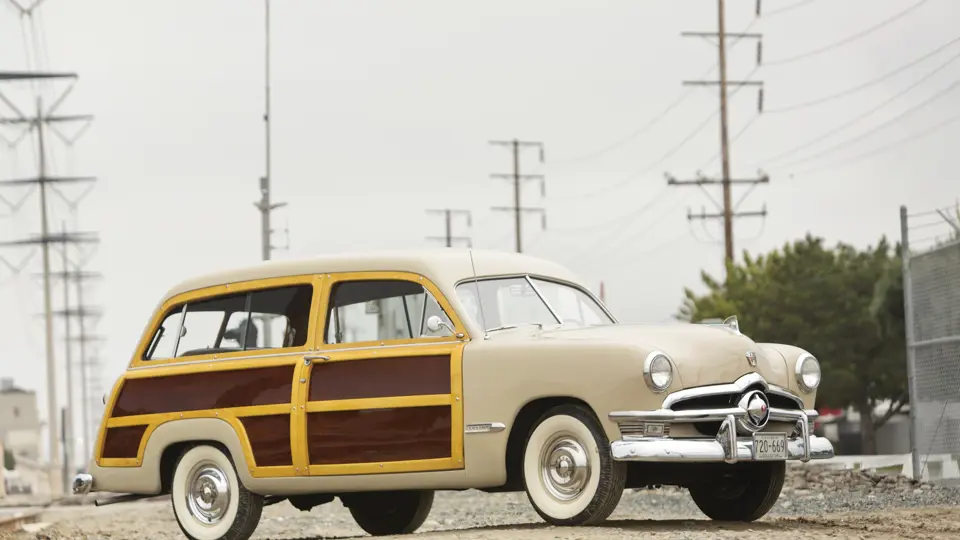
 | Monterey, California
| Monterey, California

